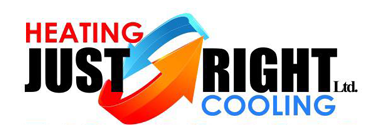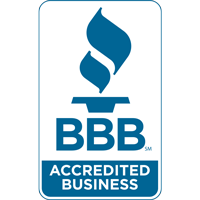
Ceiling fans are one of the most underrated ways to enhance comfort and lower energy costs. By enhancing air circulation and supporting your HVAC system, ceiling fans and energy efficiency are truly a perfect combination. They offer a cost-effective, energy-efficient way to stay cool while lessening strain on your AC—even preventing unnecessary air conditioning repair.
In this blog, the experts at Just Right Heating and Cooling discuss how ceiling fans can make your home feel more comfortable while increasing your HVAC efficiency. We'll also provide some HVAC efficiency tips that put to good use ceiling fans.
Comfort vs. Temperature: The Effect of the Wind-Chill Effect Indoors
Ceiling fans don’t actually lower the room temperature—they cool you down by increasing air movement across your skin. This is called the wind-chill effect, and it can make a room feel up to 4 degrees cooler without touching the thermostat. That means you stay comfortable and enjoy the benefits of indoor air circulation from your ceiling fan while using less AC—helping reduce your electric bill in summer.
The Best of Both: Why You Should Use Fans and Air Conditioning Together
There are several benefits to using ceiling fans and air conditioning at the same time, especially on hotter days. By combining both, you increase HVAC efficiency and maintain a comfortable indoor temperature with less work from your cooling system.
Why you should use ceiling fans and AC together:
- Ceiling fans help lower HVAC load by circulating cool air more evenly throughout rooms in your home. Reducing HVAC stress is important, because it can prevent a breakdown that could lead to premature AC or furnace installation.
- Using ceiling fans improves your indoor comfort by eliminating hot spots and enhancing circulation.
- Combining ceiling fans and AC can reduce overall energy use. If you have a home automation system, you can even modify your smart thermostat settings to bump up the temp a few degrees while your ceiling fan is running.
Clockwise vs. Counterclockwise Ceiling Fan Rotation: Which is the Correct Direction?
To maximize the benefits of your ceiling fans year-round, it’s important to make sure the blades rotate in the proper direction for the season. The direction influences how air flows, which can either cool you down or push warm air downward so you feel warmer.
When to rotate ceiling fans counterclockwise
On hot days, ceiling fans should turn counterclockwise at a faster setting. This creates a breeze that forces cool air down, enhancing the wind-chill effect and causing you to feel cooler.
When it's best to spin ceiling fans clockwise
In the winter, set your fan to rotate clockwise on a slower speed. This gently pulls cool air upward and pushes warm air near the ceiling down toward you, so you feel warmer without adjusting your thermostat.
How to Pick Out the Best Ceiling Fan for My Home
Choosing the right ceiling fan depends on a few important details, such as blade design, airflow rating and room dimensions. First, look for fans that offer a good balance of ECFM airflow and blade pitch to provide efficient air circulation in your home:
- ECFM refers to the amount of air a fan circulates—the cubic feet per minute, or CFM—per watt of electricity it uses. Fans with higher ECFM are the most energy efficient.
- Blade pitch refers to the incline of the blades. A sharper blade pitch moves more air but can also put extra load on the motor.
Also, consider room size when sizing a ceiling fan—a fan that’s too small won’t move enough air, while one that’s too big may be overpowering for the room.
Raise Your HVAC Efficiency With Help from Just Right Heating and Cooling
At Just Right Heating and Cooling, our HVAC specialists can help you stay comfortable while easing the burden on your heating and cooling systems. From efficient ceiling fan strategies and air conditioning installation to smart thermostats and furnace repair, we offer comprehensive solutions that match your needs. Set up your appointment by calling 513-935-3804 today.


